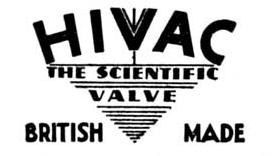
The High Vacuum Valve Company was a specialised British manufacturer of vacuum tubes/valves. They focused particularly on miniature types for devices that needed to be small and light such as hearing aids. There is some information about the company in Grace's Guide, on a page by radio enthusiast David Knight, and on a thread in the UK Vintage Radio Repair and Restoration Discussion Forum. None of those references gives any detail of Hivac transistors.
Hivac sold few semiconductors, and most of those that they did may have been made by BTH. The 1956 edition of the book 'Transistors and Crystal Diodes' by B.R.Bettridge lists the transistor XFT1. The 'British Transistor Manual' by E.N.Bradley, published in 1959, describes the transistors XFT2 and TM1 sold by Hivac. These last two use an encapsulation that is apparently identical to some early BTH transistors. However, the characteristics of the Hivac types show that they cannot be simply repainted BTH devices.
I can find no evidence of other transistors, or of any semiconductor diodes, marketed by Hivac, and I have no original Hivac semiconductor data. If you know of any, or you know more about this company's semiconductors, please
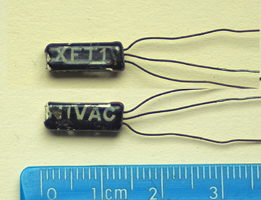
This compound image shows the front and back of the extraordinary XFT1. It uses a glass cuboid body, light-proofed by being painted black. This is not a BTH encapsulation, so may have been manufactured by Hivac themselves, probably on an experimental basis. It is certainly rare. Bettridge gives only the most basic information about it: maximum peak collector voltage -4.5 volts (the minus means it is a PNP type), maximum collector dissipation 6 milliwatts, and gain of 40 in grounded emitter. These are very low values even for the earliest transistors.
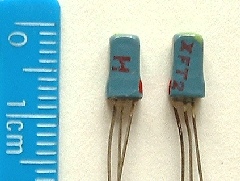
The description of the XFT2 transistor is located in Bradley's section on AF transistors. It is described as 'available for general use' and is a 'p-n-p germanium junction transistor of subminiature size, for use in hearing aids and other audio frequency applications'. It has a Vcemax of -12 volts and a max collector power dissipation of 50mW at 20 degrees C. The Vcemax value precludes it being any of the BTH types in the same subminiature package, thus creating a mystery. If you know more about this device, or have an original data sheet, please
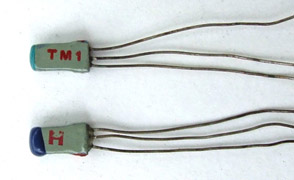
The description of the TM1 transistor is located in Bradley's section on special purpose transistors. It is described as 'available for general use' and is a 'subminiature switching transistor, for use in model control receivers, recommended for operation with the Hivac XM1 r.f. pentode'. I can find no information about the XM1. The TM1 has a Vcemax of -30 volts and a max collector power dissipation of 50mW at 20 degrees C, which again cannot be any commercial BTH type. The drawing in Bradley does not quite resemble the real device, as the book does not show the slight widening of the can at the end where the wires enter. If you know more about this device, or have an original data sheet, please
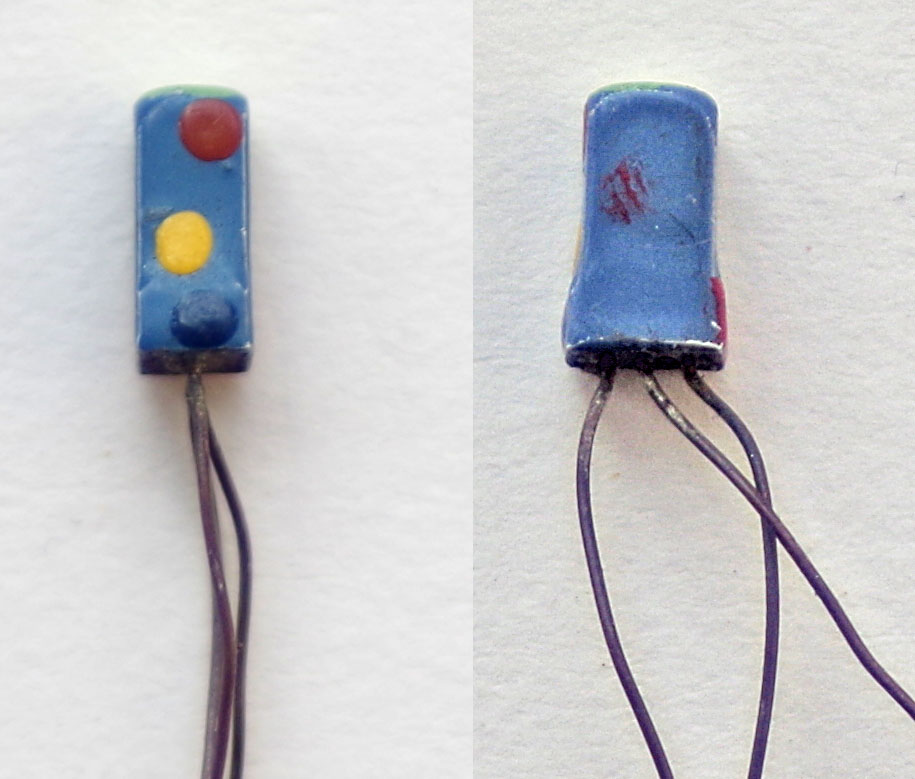
I also have this device, the face and side are shown in my compound image. There is no clear lettering at all on it, and I am guessing that it was made by Hivac because of the bluish-purple colour. BTH transistors in this outline are much paler blue. The paint dots are blue/yellow/red which could be 642 or 246 depending on order. The tiny red splodge on the face might be lettering but is indistinct. If you know anything at all about this device, please

